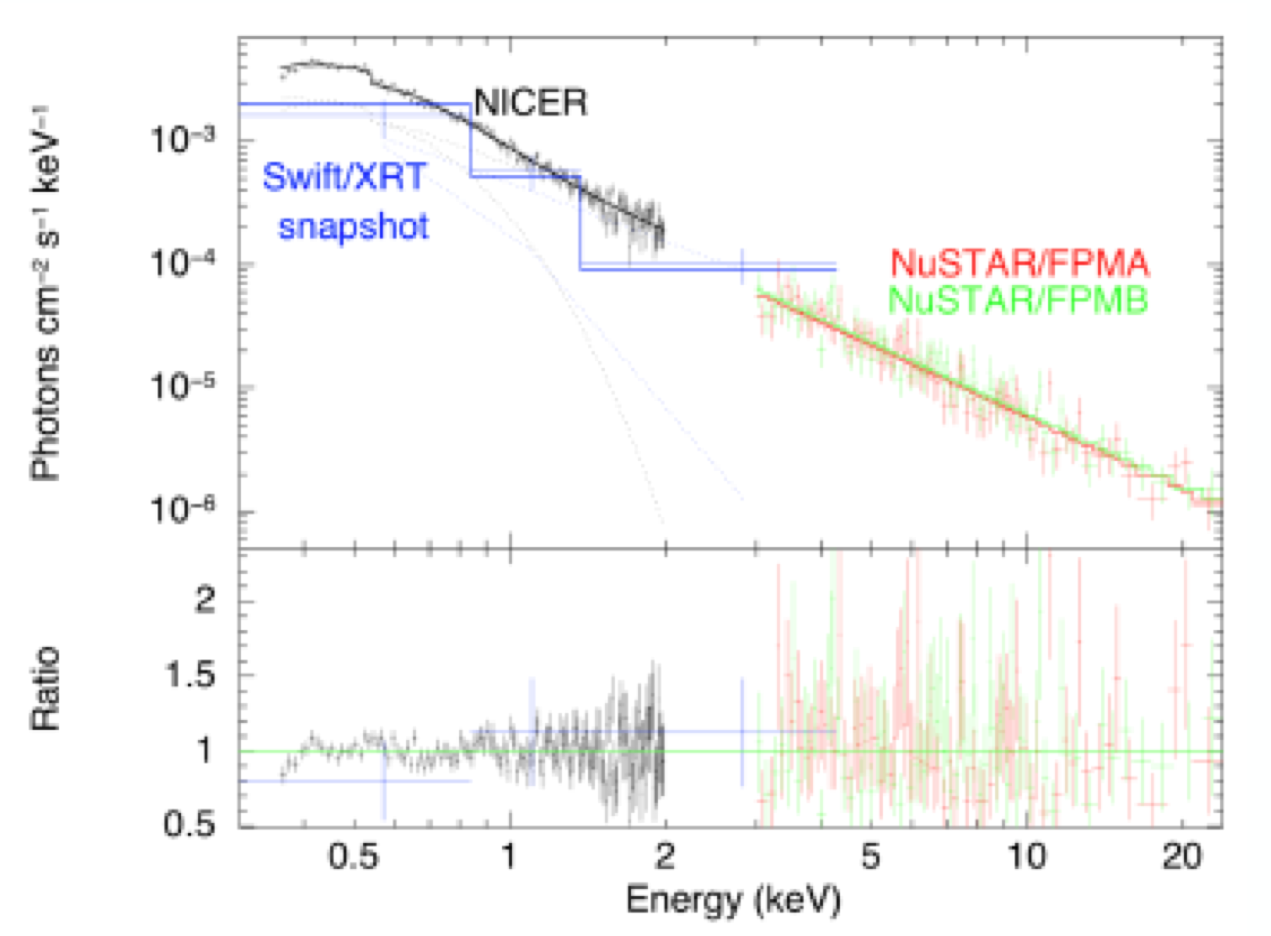NICER / ISS Science Nugget for January 17, 2019Combined X-ray data uncovers a new class of transient AGN flaresThere are a growing number of transient and variable phenomena in the nuclei of galaxies, which are contributing to our understanding of the physics of accretion onto supermassive black holes. On February 21, 2017 (several months before the launch of NICER), the All Sky Automated Survey for Supernovae (ASASS-SN) detected an optical transient in the nearby early-type galaxy 2MASX J16110570+0234002 (at redshift 0.064). The optical emission increased by 50%, but was accompanied by a dramatic increase in ultraviolet emission by a factor of 75 and a factor of 2-3 in X-rays (as detected by NASA's Swift observatory), suggesting the onset of a sudden accretion event onto a SMBH over the timescale of 2 months. The optical spectrum of this nuclear flare exhibited a mix of emission features, some of which are typical of luminous, unobscured active galactic nuclei (AGN). We also detected high-ionization emission lines that are likely driven by Bowen fluorescence. This is the first evidence of Bowen fluorescence in an AGN, revealing the presence of high-velocity gas in the vicinity of the accreting supermassive black hole. The origin of this accretion event is not well understood, and so follow-up X-ray observations were arranged. If the nuclear flare was due, for instance, to the tidal disruption of a star by the central supermassive black hole, the X-ray spectrum might reveal a very soft (~105 Kelvin) thermal spectrum. NICER and NASA's NuSTAR telescope joined forces to observe the transient on 2018 June 25 over a wide X-ray band, 0.3–24 keV in photon energy (see figure). The spectrum was well described by a hard power-law component (with photon index ~1.9) and a soft excess component below 1 keV, which is typical of a Type 1 unobscured AGN. This, in addition to the fact that the X-ray and UV flux showed little evolution over a period of at least 14 months, suggests that the large accretion event was not driven by the tidal disruption of a star, but rather by a longer-term event of intensified accretion.
The spectral and temporal properties of this transient are similar to those seen in two other recently reported events. Together, these three events form a new class of flares associated with nuclear black holes, which may hold important implications for the identification of other nuclear transients. This new NICER result is now published in Nature Astronomy (subscription required). NICER
|



